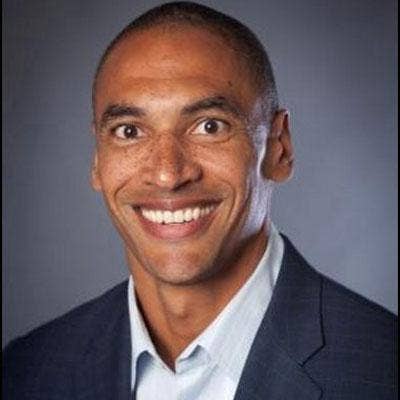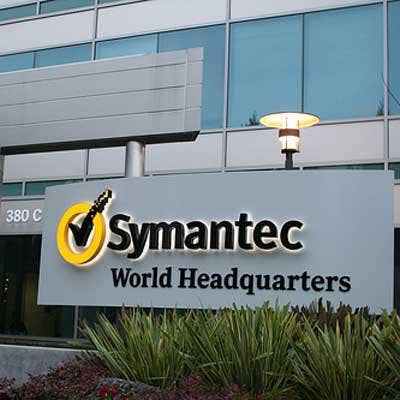Q&A: Intel Security Head Updates On New Strategy And How It Fits Into Intel Reorganization

Chris Young On The New Intel Security
It's been just more than six months since Intel Security rolled out a new strategy, under which it repositioned the company around the threat defense life cycle. Since then, the company has shed product lines, changed partner incentives and named new executives to lead the channel charge around its new security vision. Amid those changes, parent company Intel has also rolled out a reorganization strategy, focusing the company around cloud, data center and connectivity. CRN sat down with Intel Security Senior Vice President and General Manager Chris Young in advance of the company's partner conference this week in Boca Raton, Fla., to get an update on the changes, its plans for partners in the months to come and how the security vendor fits into the new Intel ecosystem. Take a look at what he had to say.

It's been six months since Intel Security rolled out its new strategy – how is it going?
If I look at our first-quarter results, things have gone really well. We saw double-digit growth in our business and that was a strong performance for us. We saw great growth in our corporate side of our business as well as our consumer business. We're really proud of the work that's been done so far. We're on a journey, though, so this is only the first step. You saw a good performance from us in Q1, but certainly we're not taking our eye off the ball. We're very focused on continuing to deliver good results through the rest of the year and beyond.

What areas specifically have you been working to update since the fall?
At Focus we rolled out a new strategy, really with the core goal that we wanted to provide an integrated solution set that really automates the threat defense life cycle – that protect, detect, correct paradigm. … There are a couple of key elements to it. One was really shifting a lot of our effort to outcome-driven solutions to bridge together a lot of the point products that customers today are required to have in their environments. The second was we were building these solutions on some key platforms that we have in our architecture, such as EPO … a strong management platform that integrates with our solutions and hundreds of partners as well, the data exchange layer [DXL]. … The third one is … really broadening our capability on the endpoint itself to deliver that full complement of the threat defense life cycle. We're doing a lot more than just antivirus on the endpoint. … We're adding EDR capabilities; we announced McAfee Active Response. We're adding new analytics-driven threat detection capabilities. We're really starting to drive more of an endpoint platform that allows you to do multiple things on the endpoint, as opposed to having one discrete set of capabilities.

Partners were very uncertain about the new strategy and amount of leadership changes. How are you communicating with them now about that?
Richard [Steranka] is our channel head. … Ken McCray, he is a longtime McAfee and Intel Security leader who has been in the business and been promoted into the Americas channel chief role. Fernando Quintero, who was responsible for Americas partners before Ken, runs Latin America today. … We think that is the right answer for our company and our business, to move people through different roles and have good succession planning in place. Where it makes sense for new people outside of the organization to join us, we will do that. … I think you can see in our results that our profitability is better than it's ever been; our growth rates are better than they've been. In a lot of ways, partners should be looking at this as a sign that we're absolutely executing well and some of the new people who have come into the business are delivering some of the results that they want to see from us. If we're doing well, that means our partners are doing well.

Intel is going through a lot of changes with a recent reorganization announcement. How does Intel Security fit into that vision?
If you look at the announcements we've made over the last couple of weeks since the earnings call [announcing the reorganization], pretty much every component of what we're talking about requires good security as an inherent component of the architecture. I think there's solid recognition of that. There's an expectation that as the world moves to more cloud-based architectures and more connected devices that our security model is going to support a lot of the shift that we're going to see in the IT architecture. I think if you were to ask questions about security to any one of the leaders of our business, they would tell you that security is a core part of what we're doing. Our goal is to make sure that as we make these shifts toward cloud architectures and as we drive more connected devices, that the right security model is foundational. The things that we're talking about, where we're providing better threat intelligence sharing, providing better partner linkages through our management console and DXL layer, that's going to be an important architectural foundation to this new IT architecture that we're going to see at a broad scale take over the industry.

Do you expect any of the 12,000 layoffs will come from Intel Security?
Like the rest of Intel, we're constantly looking at our model and our sites and if we have the right people in the right places. In some ways, we've been making decisions very similar to what Intel announced a few weeks ago in the security business, starting from last year. If anything, there's only continuation of work that we've already had in process. Our strategy, our road map, it's solid.

What next steps are you announcing around that strategy at Focus?
We'll be talking about everything I just mentioned: the evolution of our product portfolio and the momentum that we're seeing in our business and the results that we're seeing in our business. … We bought forward some new rules of engagement for our partner community [at the last Focus event]. You'll see announcements from us around driving better partner profitability. We've already redirected some of our rebates to our Platinum partners. We want to invest more in partners who want to invest in us. … The theme for the conference is "ascend." If you think about that for a moment, it's really about going higher and doing more together with our partner community. One of the key elements in this strategic shift that we made is to get to more of an outcome-driven model. … That's a big part of the message that we're taking to partners. … As part of our strategic shift to be more outcome-driven, we are bringing new reference architectures, new tested and validated designs to partners so they are equipped with the best information on interoperability between products, on how to drive architectural solutions, on how to deliver automated capabilities to customers. … You'll hear a lot about that message this week.

What do you think of what's happening with your competition right now? Do you see the changes at Symantec as an opportunity?
I think there's a lot of change happening in the security space. I'm trying to be very focused on what we control, our engagement with customers. I would say there are so many companies in our space right now – large, medium, small, high growth, low growth. To some degree, I can't focus on just one. Our space is perhaps, if not the most dynamic part of IT, it has to be one of the most dynamic in terms of the number of companies, amount of change and innovation. We're trying to stay laser-focused on who are the customers, what do they need, are we executing on our road map. We want to be cognizant of competition and what they're doing and what's happening with them, but I think we will be better served if we're laser-focused on the customer need.

What's the big message to partners about what to expect from Intel Security in the near term?
Our message to the partners is … that we're in full flight executing on the strategy we announced last year. We're seeing good proof that momentum is there and it's working. We're heads down on the engineering side delivering the product road map that we announced at Focus last year and building out the components that are part of that new strategy and that new road map. We said we would bring on new technology partners and we continue to execute really well. If you think about it, we probably brought more partners into our [Security Innovation Alliance] program in the last six months than we did in the last three years prior. … [Partners] want better profitability, they want more incentives to really go deeper with customers and that's how we're directing our investment and how we're directing our efforts. Our product portfolio is full steam ahead. Our program is focused on the partners who are invested in us. Technical partners, we have invested there, and [invested] a lot of energy around making our interoperability testing and our reference architectures strong so we can deliver a strong front to the customers and strong outcomes that our customers will ultimately get benefit from.

You've got some great personal news, as well?
I'm getting appointed to NSTAC, which is the National Security and Telecommunications Advisory Committee. It's a presidential advisory appointment. … I look forward to it. It's a good opportunity to do something that helps us at a national level. Cybersecurity, it's a topic that transcends any individual company. I think it's important that all of us play a role in what's happening more broadly because it's a big issue for businesses and consumers alike. I'm looking forward to it. I haven't had a chance to get really indoctrinated into what they do, but I'm looking forward to that part.